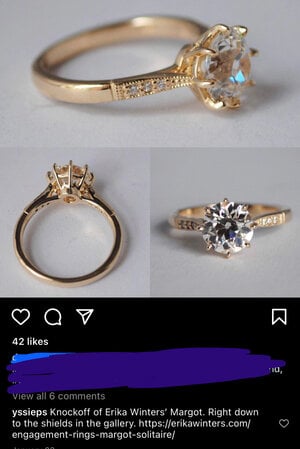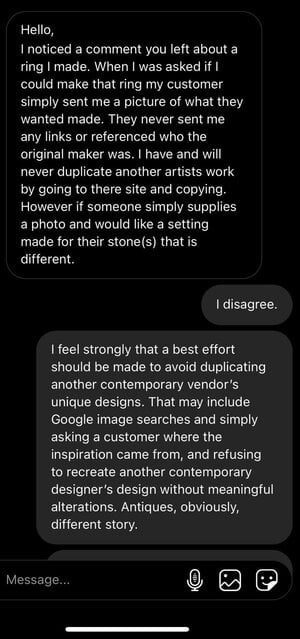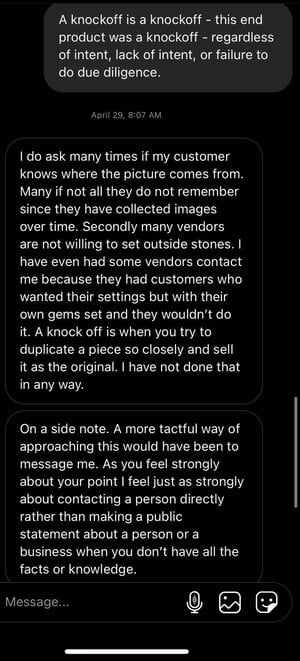AllAboardTheBlingTrain
Ideal_Rock
- Joined
- Apr 22, 2020
- Messages
- 3,396
A mini discussion was sparked on a different (unrelated) thread, and I thought it might be an interesting discussion for the wider community. I think we’ve had similar discussions before, but the last one was quite some time ago so might be good for newer members or if older posters have changed their minds.
Tagging @Paisley2628 as we were discussing this on the other thread.
Really the question is what it says on the tin - what is, in your opinion, “acceptable” with jewelry, and what isn’t?
On one hand, there is nothing truly “original” out there. There are a finite number of metal/colours, shapes, and stones that can be used. VCA’s Alhambra is an iconic line, but their use of the general quatrefoil shape isn’t. David Yurman does their own version of a quatrefoil (I’m fairly sure). Both Graff and Chaumet do a version of a stylised bow but they weren’t the first to do so, I’m sure. On the other, all of these pieces are reasonably distinct from each other. Cartier’s screw motif is iconic, and the distinguishing factor from what would otherwise be a standard gold bracelet. So this, imo, is both ok and unavoidable.
Moving on to less “distinct” designs, though - Tiffany may have copyrighted the term DBTY but they were hardly the first to make a diamond bezel station necklace. The Victoria stud earrings, in my opinion, are not particularly distinctive (I’ve seen versions of this by many jewelers over the years, my granddad had a pair of cufflinks that looked like the studs, from the 70s/80s, before Tiffany launched Victoria). The “Tiffany solitaire” setting is not something Tiffany can really “own”, it is a 6 prong knife edge solitaire, and people have been making that before, alongside and probably after Tiffany.
So, I personally think it is fine to own and wear jewelry that is “inspired by” or “similar to” jewelry that is already being made and sold, as long as it is either a very “basic” design or with some small changes. You’ll never know for sure if it was truly unique, anyway.
When it comes to more iconic designs though - I don’t think an exact copy is fair or kosher.
so what do you guys think?
Tagging @Paisley2628 as we were discussing this on the other thread.
Really the question is what it says on the tin - what is, in your opinion, “acceptable” with jewelry, and what isn’t?
On one hand, there is nothing truly “original” out there. There are a finite number of metal/colours, shapes, and stones that can be used. VCA’s Alhambra is an iconic line, but their use of the general quatrefoil shape isn’t. David Yurman does their own version of a quatrefoil (I’m fairly sure). Both Graff and Chaumet do a version of a stylised bow but they weren’t the first to do so, I’m sure. On the other, all of these pieces are reasonably distinct from each other. Cartier’s screw motif is iconic, and the distinguishing factor from what would otherwise be a standard gold bracelet. So this, imo, is both ok and unavoidable.
Moving on to less “distinct” designs, though - Tiffany may have copyrighted the term DBTY but they were hardly the first to make a diamond bezel station necklace. The Victoria stud earrings, in my opinion, are not particularly distinctive (I’ve seen versions of this by many jewelers over the years, my granddad had a pair of cufflinks that looked like the studs, from the 70s/80s, before Tiffany launched Victoria). The “Tiffany solitaire” setting is not something Tiffany can really “own”, it is a 6 prong knife edge solitaire, and people have been making that before, alongside and probably after Tiffany.
So, I personally think it is fine to own and wear jewelry that is “inspired by” or “similar to” jewelry that is already being made and sold, as long as it is either a very “basic” design or with some small changes. You’ll never know for sure if it was truly unique, anyway.
When it comes to more iconic designs though - I don’t think an exact copy is fair or kosher.
so what do you guys think?











300x240.png)